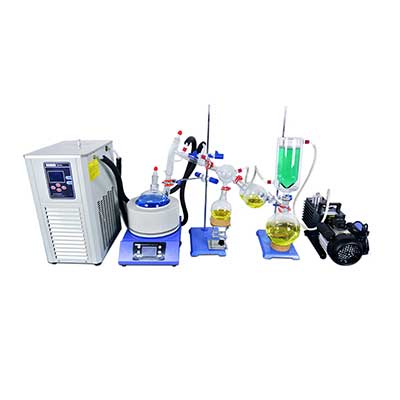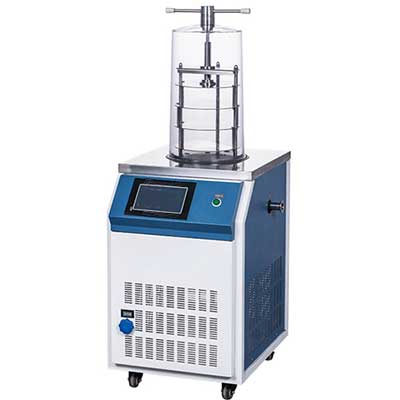The stainless steel reactor container produced by ZZKD laboratory equipment manufacturer has the characteristics of rapid heating, high temperature resistance, corrosion resistance, sanitation, and no environmental pollution. It does not require automatic heating by a boiler, is easy to use, and has a stirring function. And it is widely used in petroleum, chemical, rubber, pesticide, dye, medicine, food. , Cooling, and liquid extraction and gas absorption and other physical changes need to use a stirring device to get good results, and can design and process external coil reactors for customers.
Some users who do not know about stainless steel reactors will ask, aren't glass reactors and stainless steel reactors working the same? And the corrosion resistance of the glass reactor vessel is better than that of the stainless steel reactor vessel. Why choose a stainless steel reactor?
In fact, I have had such doubts before, but after a deep understanding, you will find the difference between them. I will include this issue in the next article to introduce the differences between them. Next I will give a detailed introduction to the stainless steel chemical reactor to help more people understand the stainless steel reactor vessel.

Construction principle of stainless steel reactor:
The
stainless steel reactor design is composed of a pot body, a lid, a stirrer, a jacket, a support and transmission device, a shaft sealing device, etc. The material and opening can be formulated according to the user's process requirements. The heating forms include electric heating, oil heating, gas heating, water heating (or cooling), and open flame heating. Jacket types are divided into: jacket type and outer half-tube type, and jacket oil heating type are equipped with flow guiding devices. Stirring types are generally paddle type, anchor type, frame type, spiral type, and scraped wall type. High-speed types include discrete impeller type, turbine type, high shear type, and propeller type for customers to choose according to the process. The transmission forms include ordinary motors, explosion-proof motors, electromagnetic speed-regulating motors, inverters, etc. The reducers include cycloid pinwheel, worm gear, and planetary stepless variable speed. The shaft seal is a common water-cooled packing seal, a combined PTFE packing seal, and a mechanical seal. There are ball valve and down valve.
Features of stainless steel vacuum reactor:
1. Materials used in the production of stainless steel reactors
◆ The inner tank body is made of stainless steel (SUS304, SUS316L or SUS321) according to the process requirements. The inner surface is mirror polished. It can be cleaned online by CIP and sterilized by SIP. It meets the requirements of sanitary regulations.
◆ The jacket is made of stainless steel (SUS304) or carbon steel (Q235-B) according to the process requirements.
◆ The parts in contact with the material are made of high quality stainless steel such as 304 or 316L, which conform to the GMP standard.
2.Stainless steel reactor accessories
◆ Multi-frame mixing is used to ensure that the materials are evenly mixed in a short period of time; at the same time, frame, anchor and slurry types can be selected according to needs.
◆ The seal adopts sanitary mechanical seal, which can ensure the pressure in the tank and prevent unnecessary pollution caused by leakage of materials in the tank.
◆ The interface adopts ISO standard quick-release clamp type, which is convenient and hygienic.
◆ Aseptic respirator, CIP cleaning nozzle, sight glass, flange, quick-open manhole, etc.
3.Surface treatment of stainless steel reactor
◆ The inner surface is polished by mirror to ensure no hygienic dead corners. The fully enclosed design ensures that the materials are always in a sterile state.
◆ Heating and cooling: The heating method can be selected from steam, electric heating, and thermal oil to meet the technological needs of different working environments such as acid resistance, alkali resistance, high temperature resistance, abrasion resistance, corrosion resistance, etc.

1. Before the stainless steel reactor runs
◆ Inspector, stirrer, rotating part, auxiliary equipment, indicator, safety valve, pipeline and valve are in compliance with safety requirements.
◆ Check whether water, electricity and gas meet safety requirements.
2.Stainless steel reactor in operation
◆ The reactor's stirrer should be turned on before feeding. When there is no noise and it is normal, add the material to the reactor. The amount of feeding should not exceed the process requirements.
◆ Before opening the steam valve, open the return valve first, and then open the intake valve. The steam valve should be opened slowly to preheat the jacket and gradually increase the pressure. The pressure inside the jacket must not exceed the specified value.
◆ Steam valve and cooling valve cannot be started at the same time. Hammering and collision are not allowed when the steam pipeline is over-gas.
◆ When opening the cooling water valve, open the return valve first and then the inlet valve. The pressure of the cooling water shall not be lower than 0.1 MPa and shall not be higher than 0.2 MPa.
◆ For water ring vacuum pumps, first turn on the pump and then feed the water. When stopping the pump, stop the pump first and then stop the water, and the water in the pump should be eliminated.
◆ Check the operation of the reactor at any time, and stop it for maintenance if any abnormality is found.
3. After the stainless steel reactor is shut down
◆ Stop stirring, cut off power, and close various valves.
◆ The power of the blender must be cut off, the warning signs should be hung, and a person should be set up to guard the pan.
◆ Stainless steel reactors must be subjected to periodic technical inspections according to the requirements of pressure vessels.
Classification of stainless steel pressure reactor:
Stainless steel reactor can be divided into stainless steel magnetic stirring reactor, stainless steel electric heating reactor and stainless steel steam heating reactor.
◆ Stainless steel magnetic stirring reactor: As the name implies, we can know that this type of reactor can stir the materials and help the materials react better. It is mainly made of 1cr18Ni10Ti stainless steel, and can be made of titanium (TA2), nickel (Ni6) and composite steel plates according to the requirements of different media. The reactor structure has a flat cover, a convex cover and a closed body with a manhole, and the reactor. The opening in the cover can be designed according to user requirements;
◆ Stainless steel electric heating reactor: Electric heating stainless steel reactor is a key factor in the development of medicine. Only relying on the advanced equipment can make medicine go to a large-scale and modern terminal. The agitator of the reactor has been developed from a single agitator to a forced circulation with a double agitator or an external pump, thereby increasing the reaction speed.
◆ Stainless steel steam heating reactor: The reactor and the lid are sealed by a flange. There is a discharge hole in the lower part of the reactor. There is a stirrer in the reactor. Safely vent other process pipe holes. The upper part of the lid is welded to the bracket, and a reducer and a motor are installed. The stirrer in the pot is driven by a transmission shaft. The heating jacket is provided with inlet, exhaust (steam) temperature measurement, venting steam valve, electric heating rod and other nozzle holes.
Maintenance of stainless steel reaction:
Pay attention to the working condition of the entire equipment and reducer when maintaining the stainless steel reactor. The lubricant of the reducer should be replenished immediately. The electric heating medium oil should be replaced every six months. Meters, distillation holes, electric heating rods, electrical appliances and other instruments should be checked regularly. If there is a fault, it should be replaced or repaired immediately. When the equipment is not in use, be sure to thoroughly clean the inner and outer walls of the container with warm water. Bright and durable.
The reactor is an indispensable anti-corrosion equipment in the chemical industry. In use, mechanical collisions, rapid temperature changes and other factors often cause deporcification, cracks, bubbles, pores and other damage to the glaze. These defects are never allowed in enamel equipment. Once this happens, it must be repaired. High-molecular composite field repair agent is a two-component composite material composed of high-molecular polymer, alloy steel powder or wear-resistant ceramic powder with a curing agent. Compared with ordinary resin-type repairing agents, polymer composites rely on their finer polymer structure, which makes the material itself have stronger adhesion and excellent corrosion and corrosion resistance. Polymers can even penetrate into Inside the metal, a tighter protective layer of polymer composite material is formed. Repair process: surface cleaning → rust removal → anhydrous alcohol cleaning → coating of bottom layer repair agent → coating of surface layer repair agent → curing → use.





















